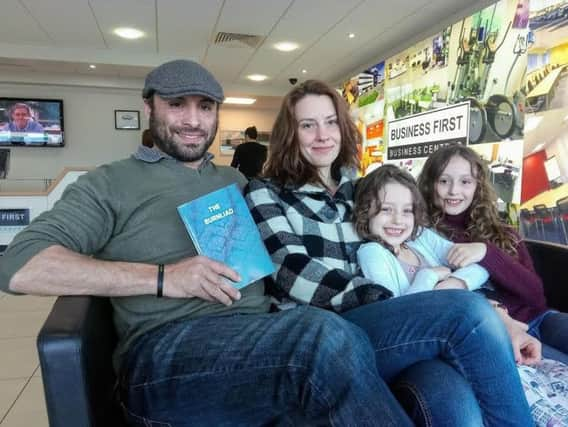Was epic Viking battle fought in Burnley?


That is the view of poet Damo Beeson-Bullen who has produced a book of blogs, musings and poems on the cataclysmic battle, titled “The Burnliad”.
The former Gawthorpe High School student, who now lives in Edinburgh, has been researching the famous battle for years and has made the bold prediction it was fought in Harle Syke.
Advertisement
Hide AdAdvertisement
Hide AdSaid to be one of the most significant battles in the history of the British Isles, it saw Æthelstan, King of England emerge victorious over an alliance of Olaf Guthfrithson, King of Dublin; Constantine, King of Scotland; and Owen, King of Strathclyde.
Indeed, it has been called “the greatest single battle in Anglo-Saxon history before Hastings”.
Damo (40) said: “The actual location of the battle is still officially a mystery, historians can’t agree on where it was fought, but I believe it was here in my home town.
“Experts have surmised that Brunanburh refers to a river name Brune. There is only one waterway by that name in the whole of Britain, rising on moorland a few miles to the west of Burnley – formerly Brunlea – by the hill known as Black Hameldon.
Advertisement
Hide AdAdvertisement
Hide Ad“Another historian to place the battle by a river-ford was Ranulf Higden who gave the variant spelling of Brumford. Coincidence or not, he was writing at that very period in history when Burnley’s name was given as Brumleye in a 1294 market charter.
“I believe Brunanburh should be considered a fundamental part of the town’s folklore, alongside the legends of the Pendle Witches and the ongoing saga of Burnley Football Club.”
Indeed, the town’s other great warriors, the Clarets who clash on the field of Turf Moor, are also featured in Damo’s book in a number of poems.
Damo added: “To the residents of Burnley I say take a walk in the countryside, note the names of the cloughs and the hills, and let us weave a secret history drawn from the phonetical landscape of our towns and their wonderful surrounds.”
The Burnliad is available to buy from Damo’s website damowords.co.uk and will also soon be available in local shops.